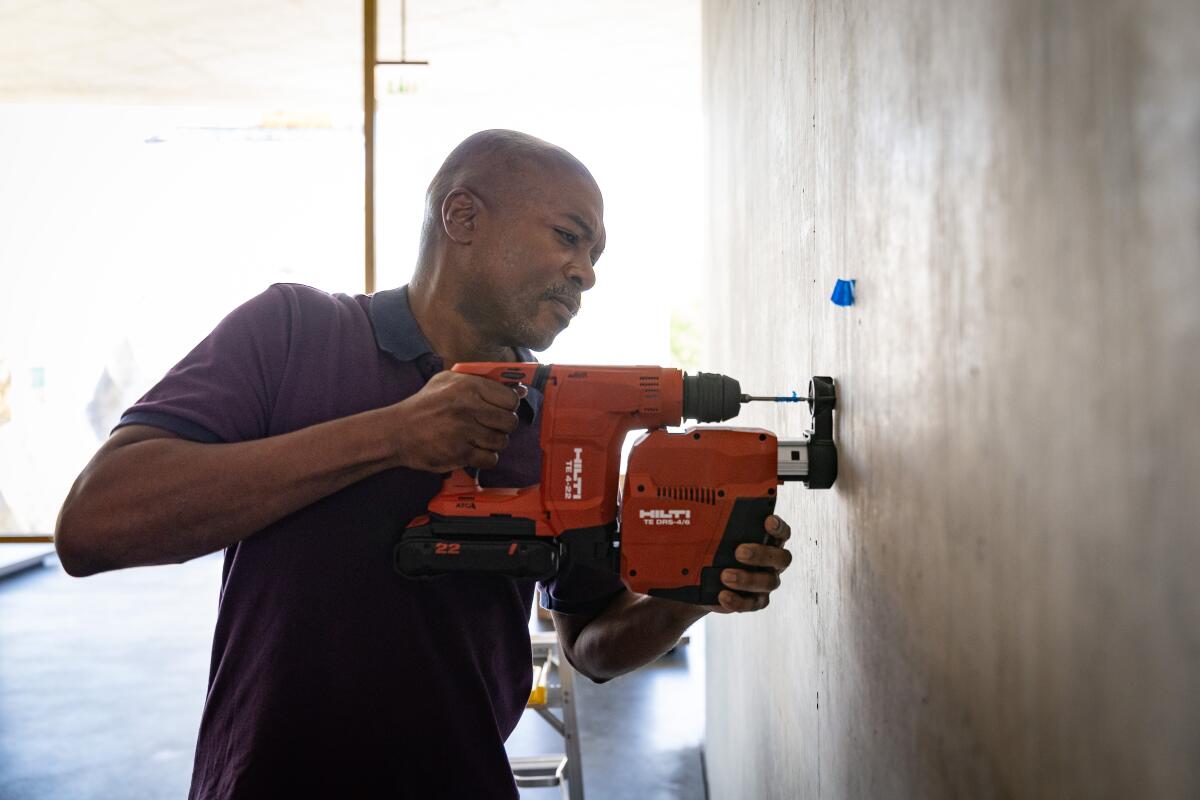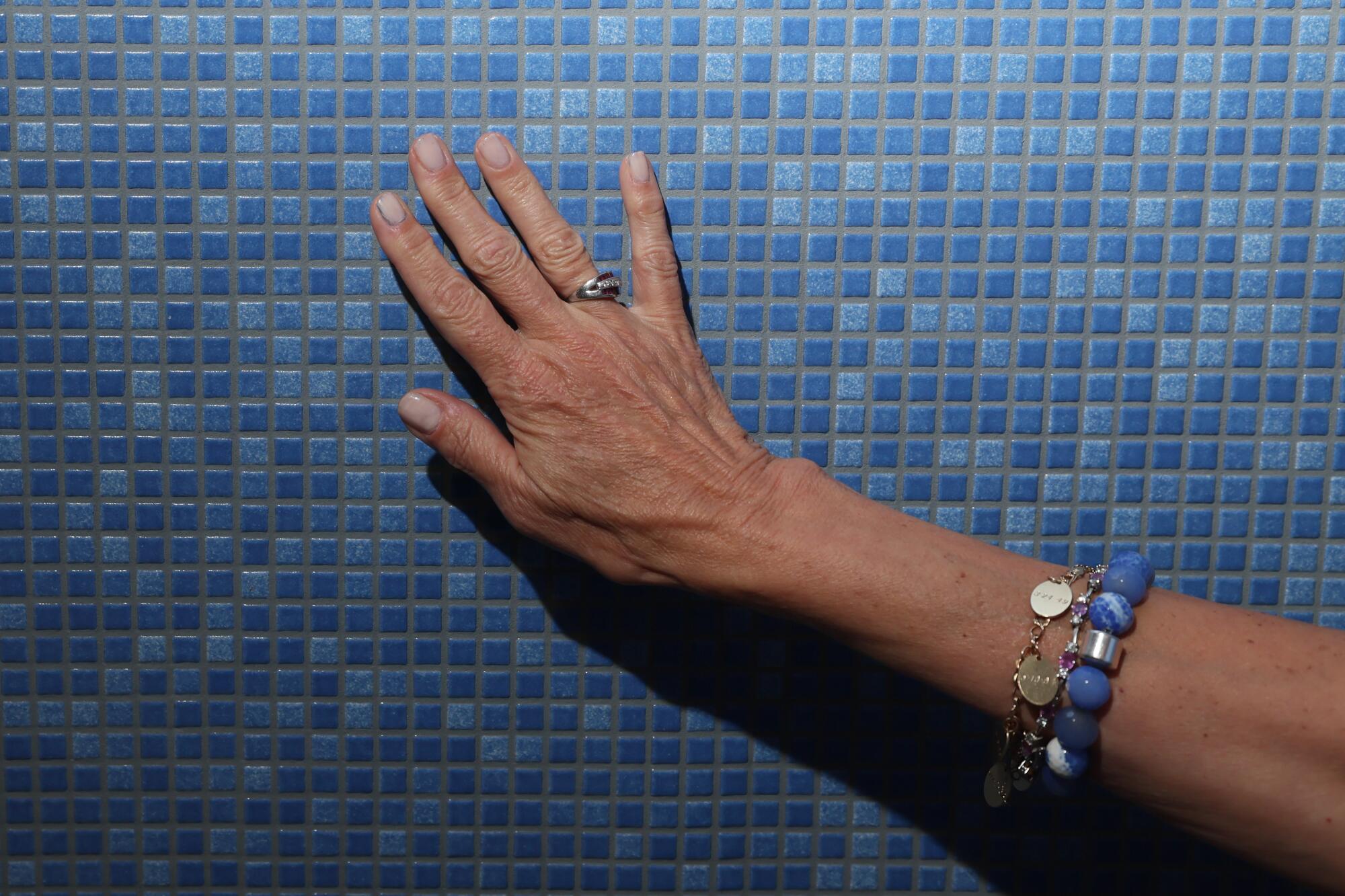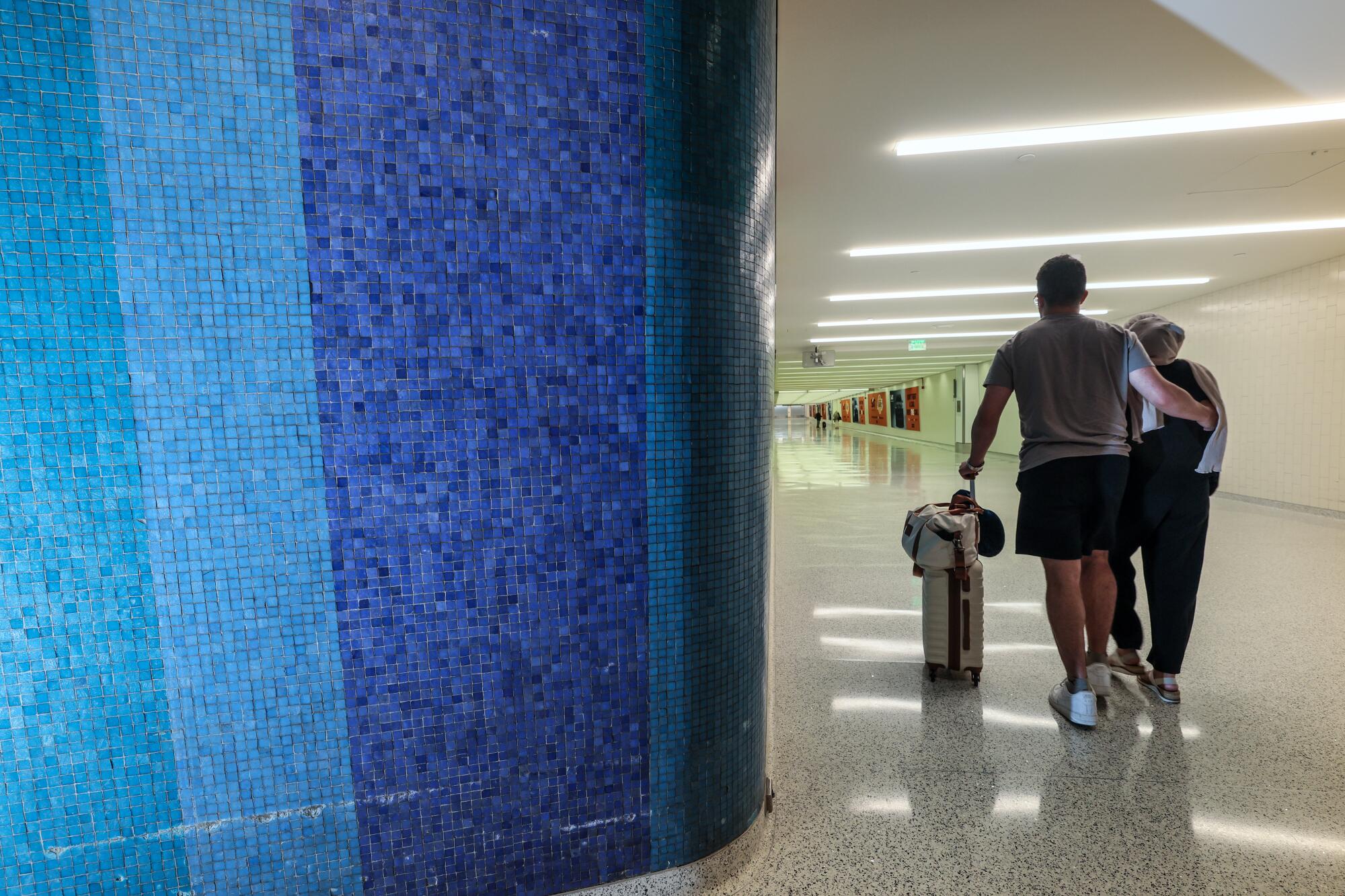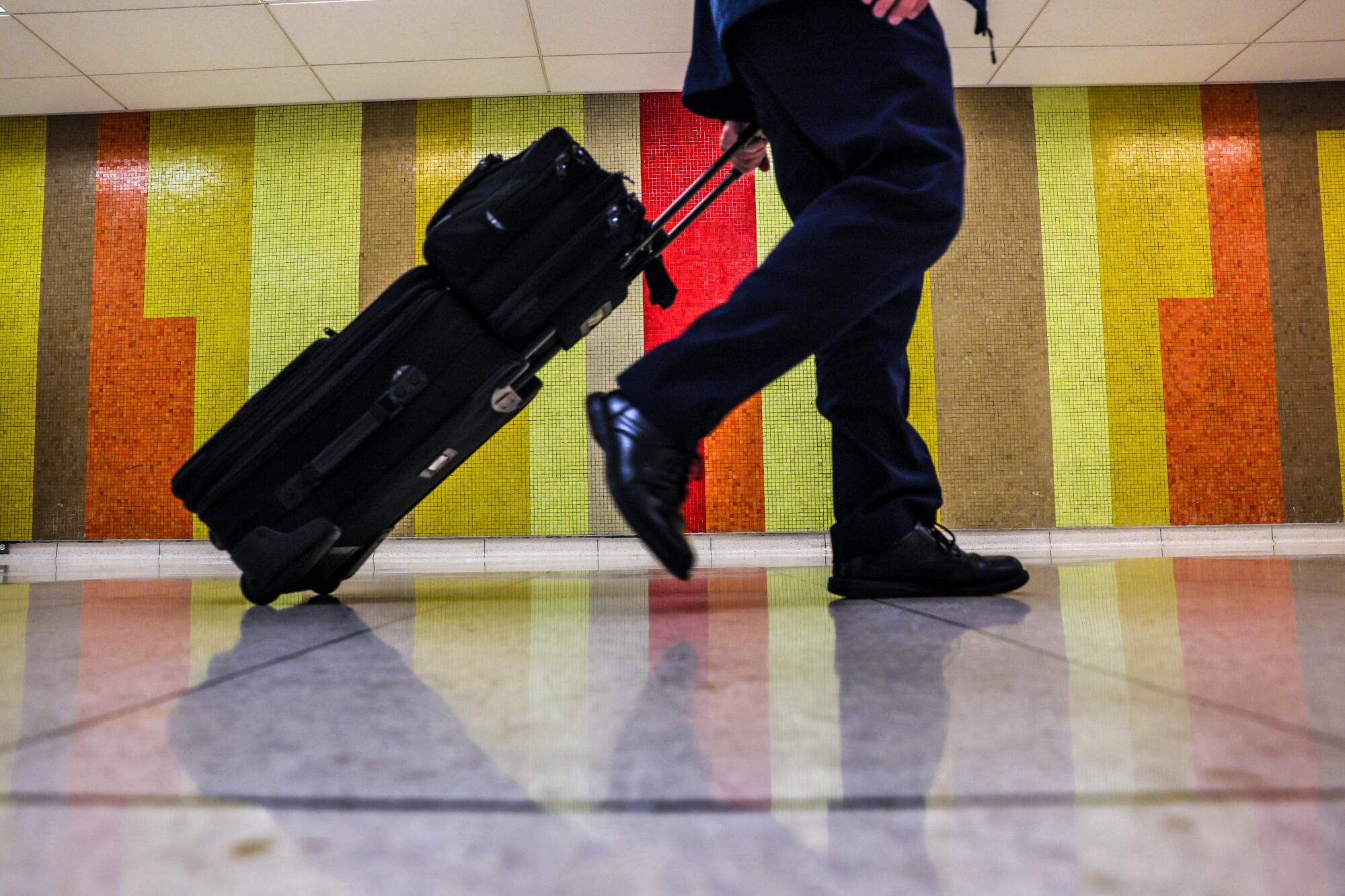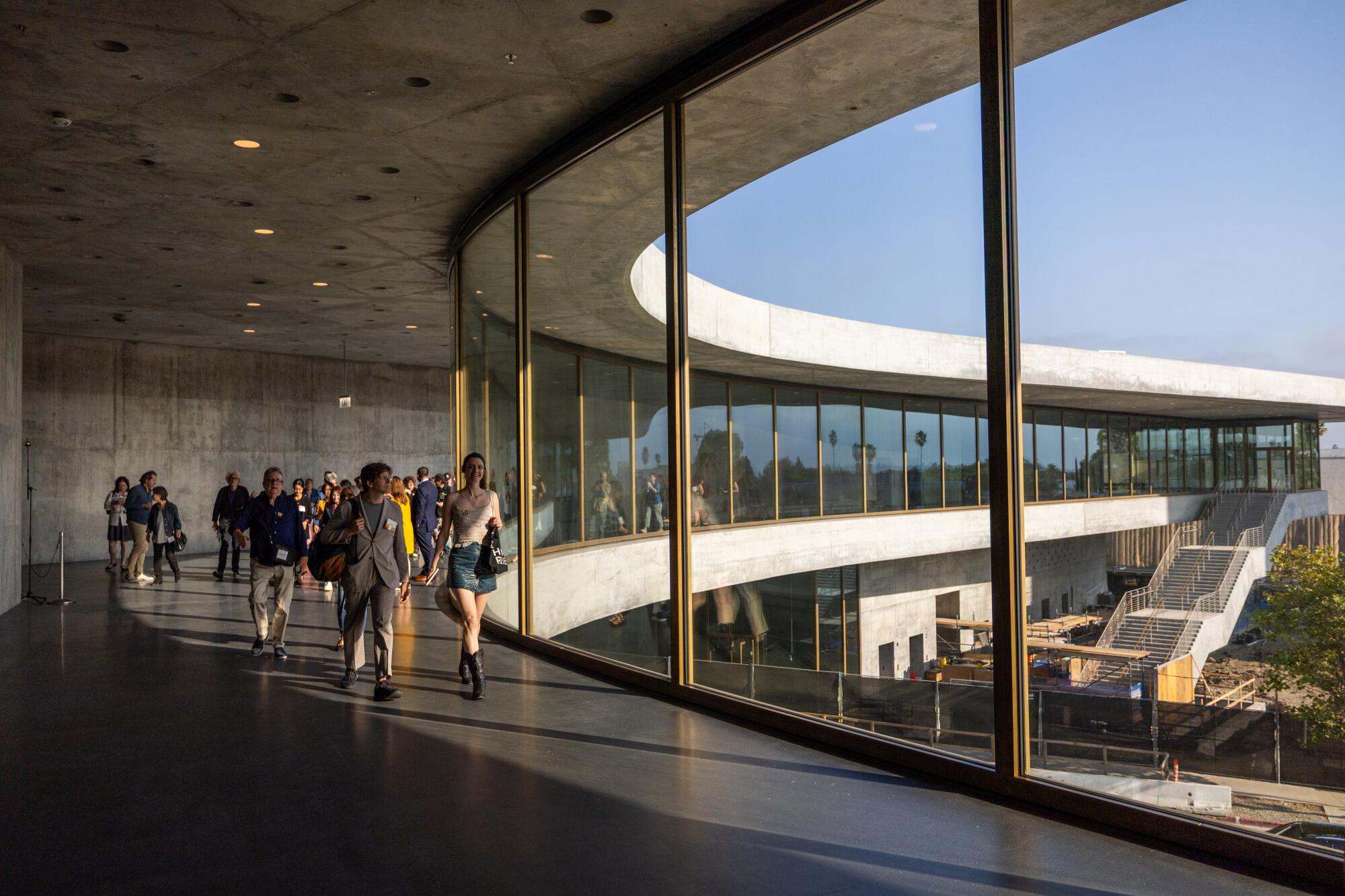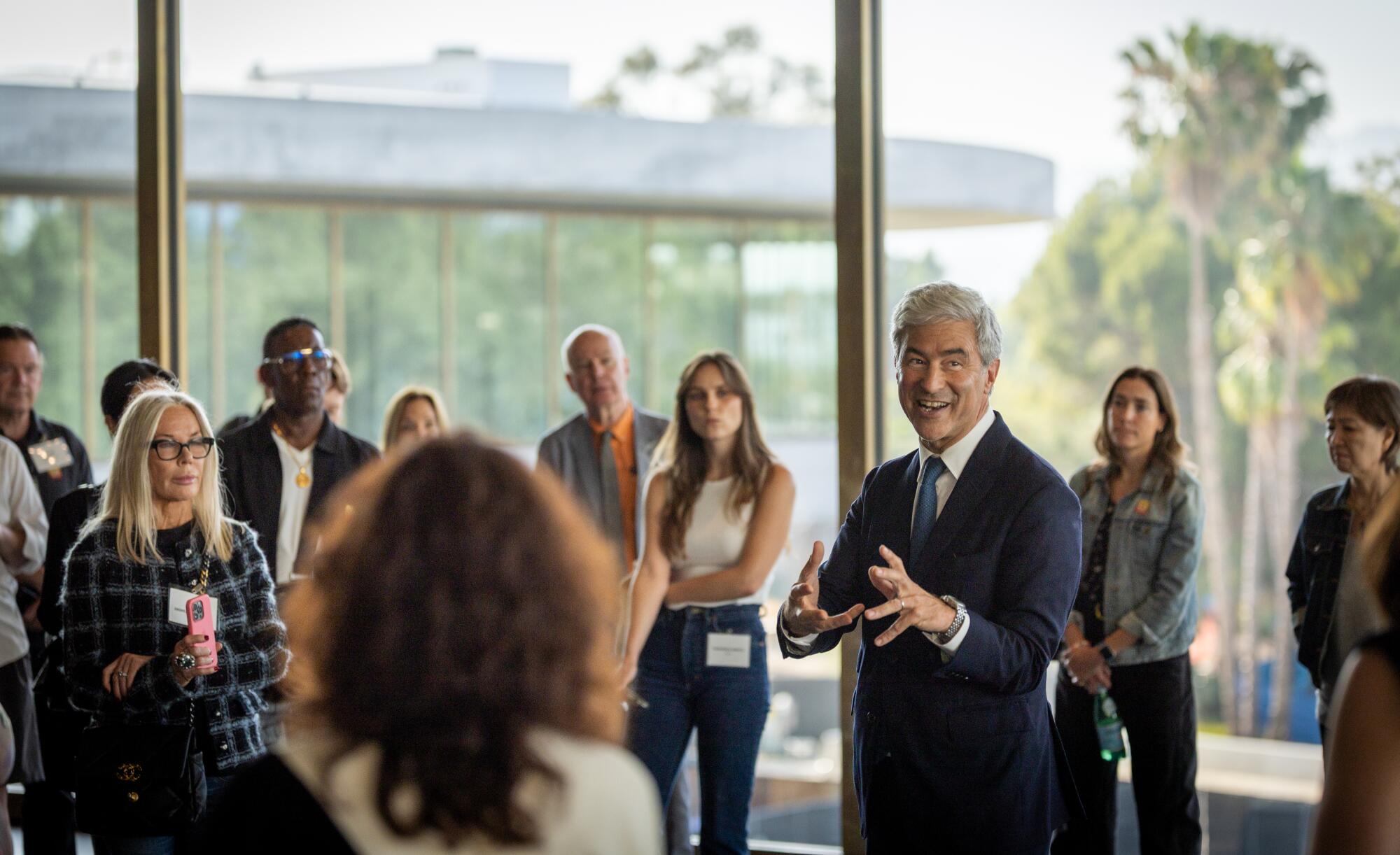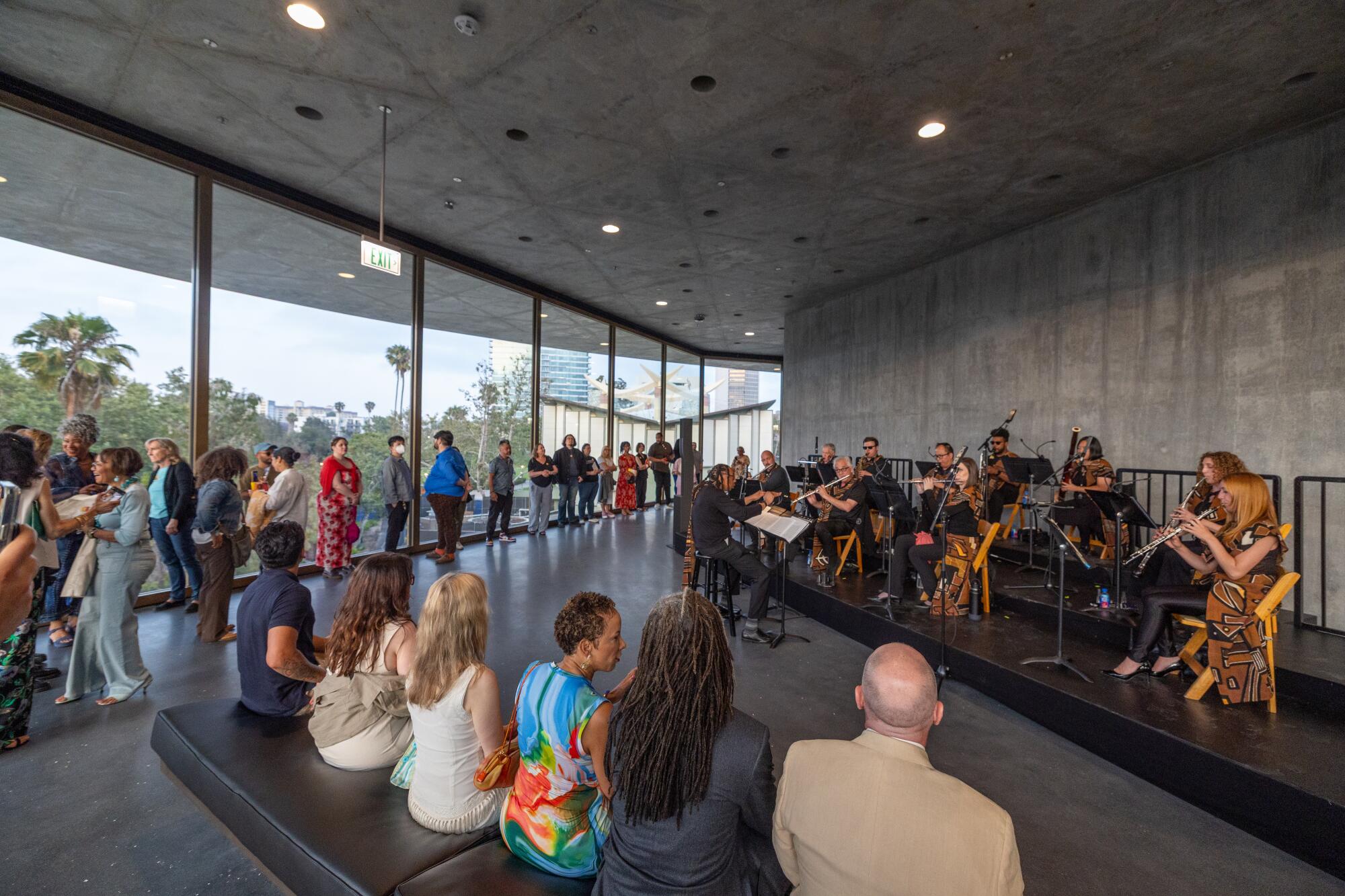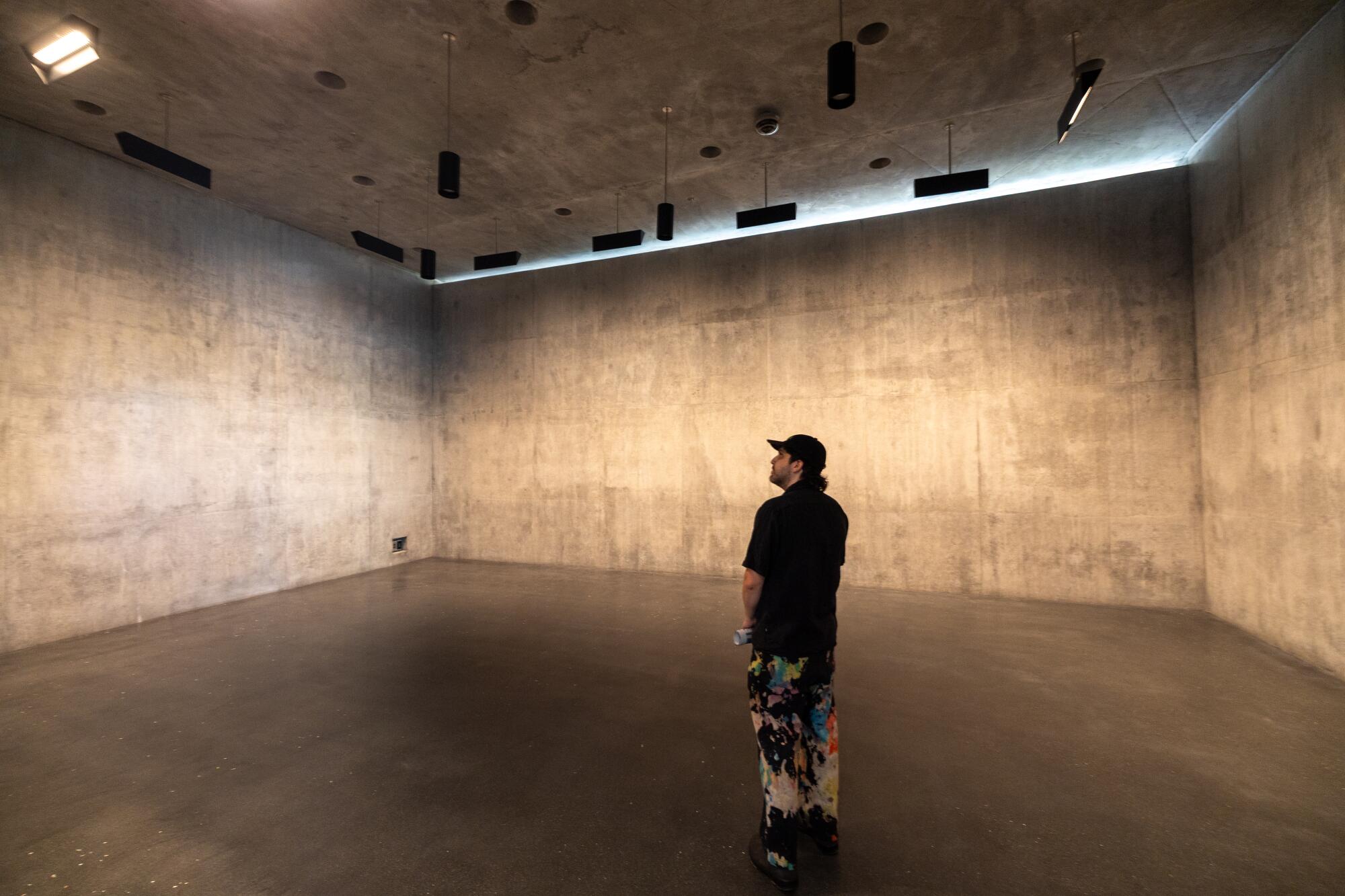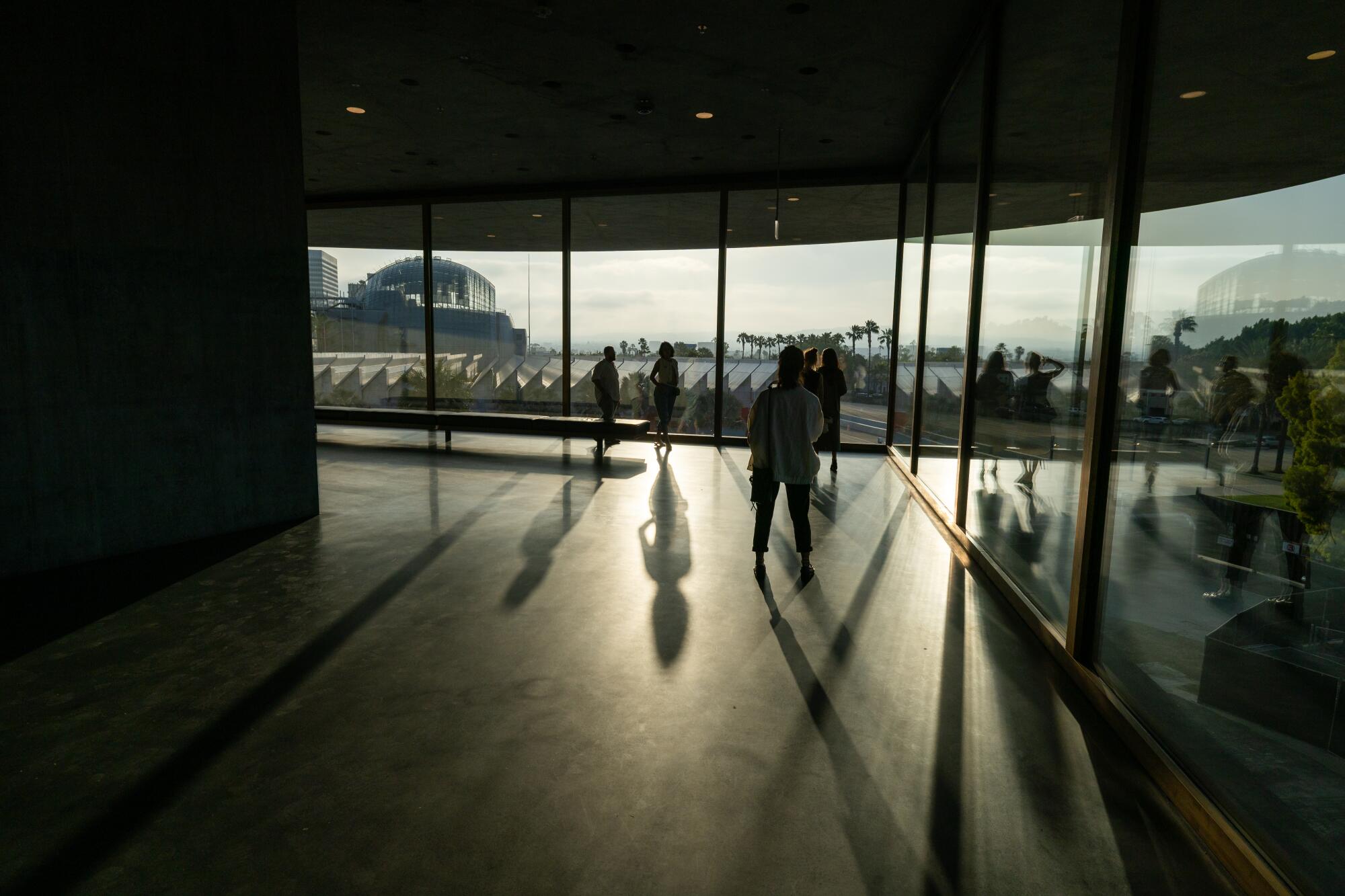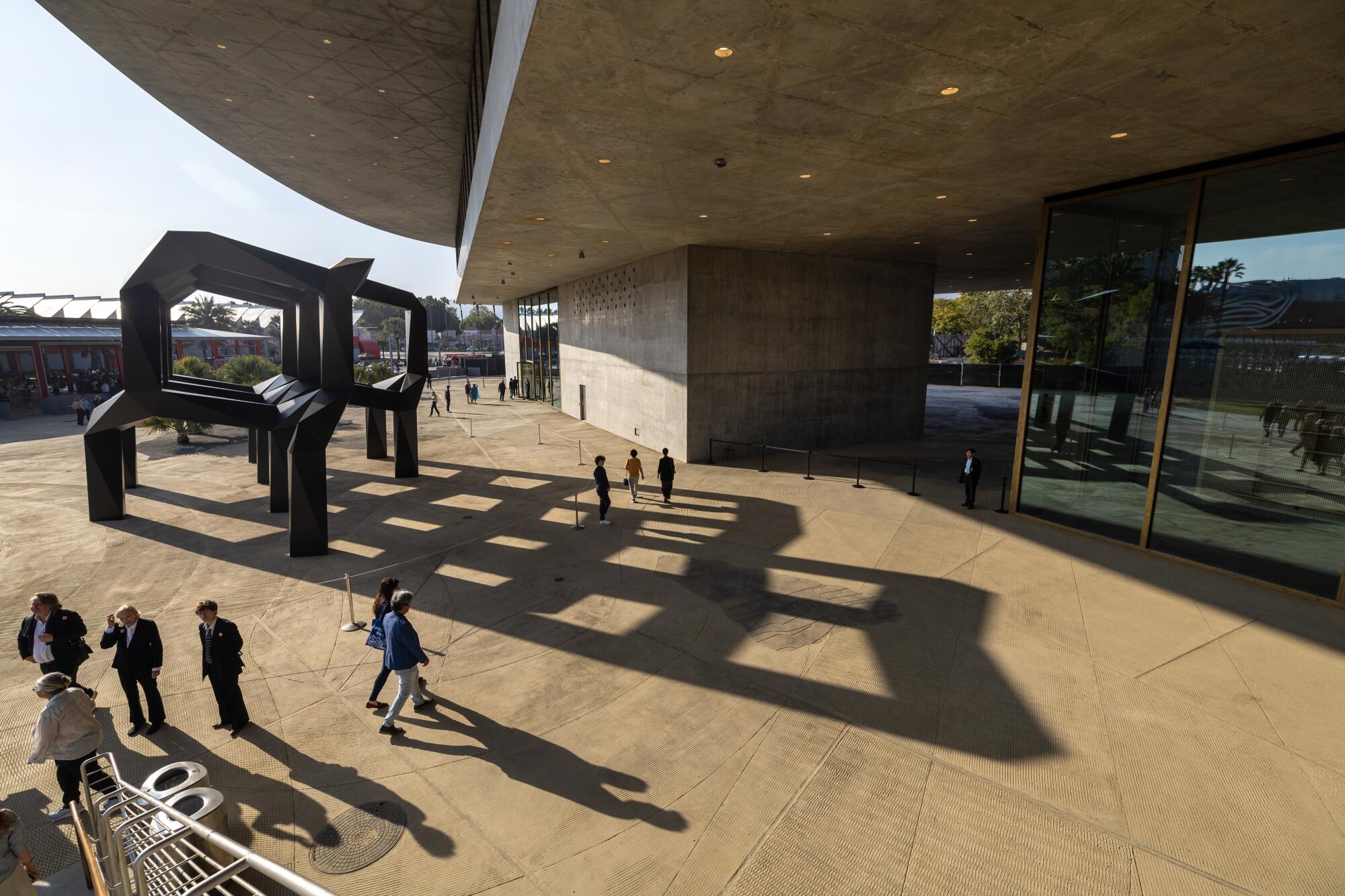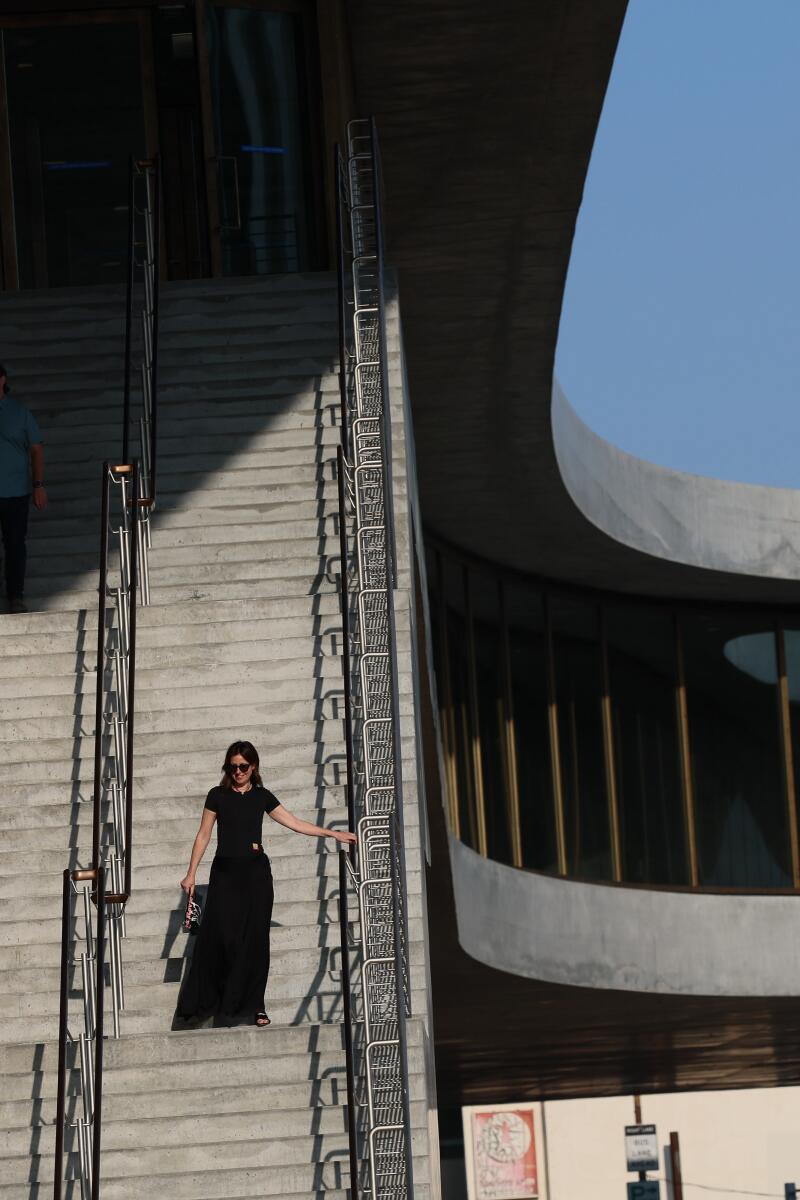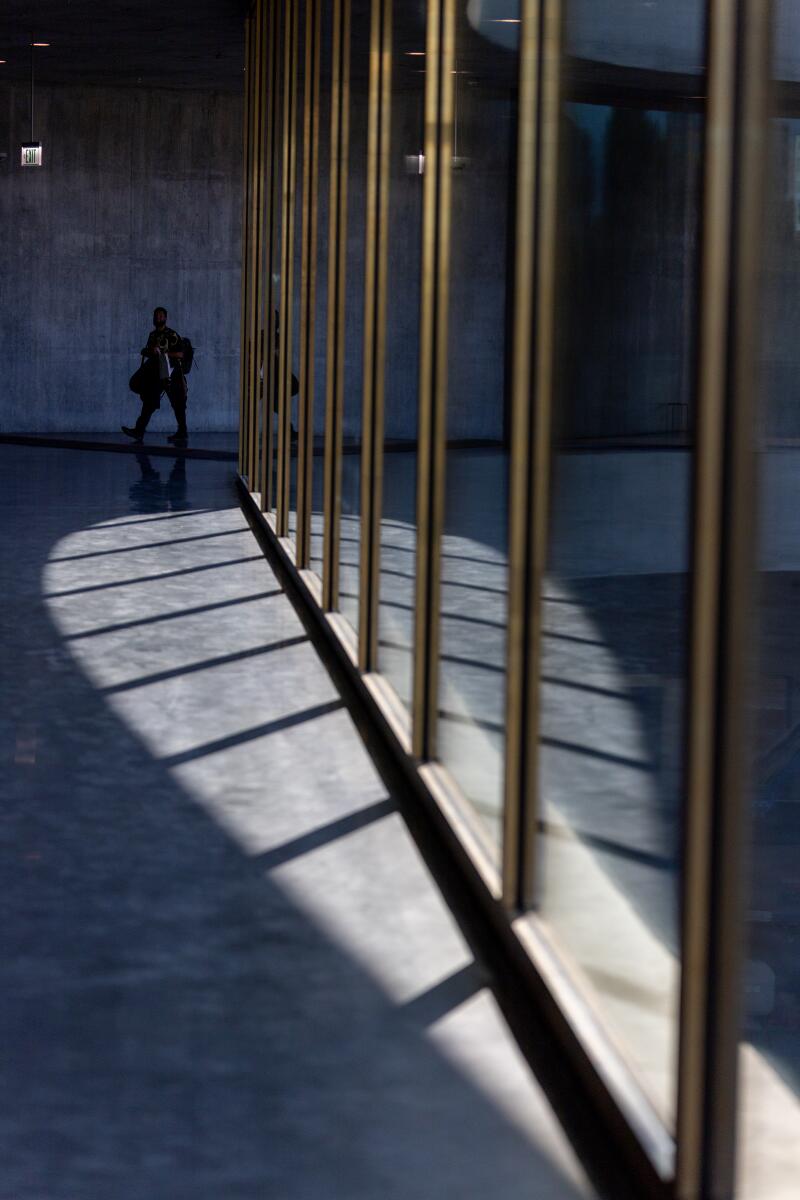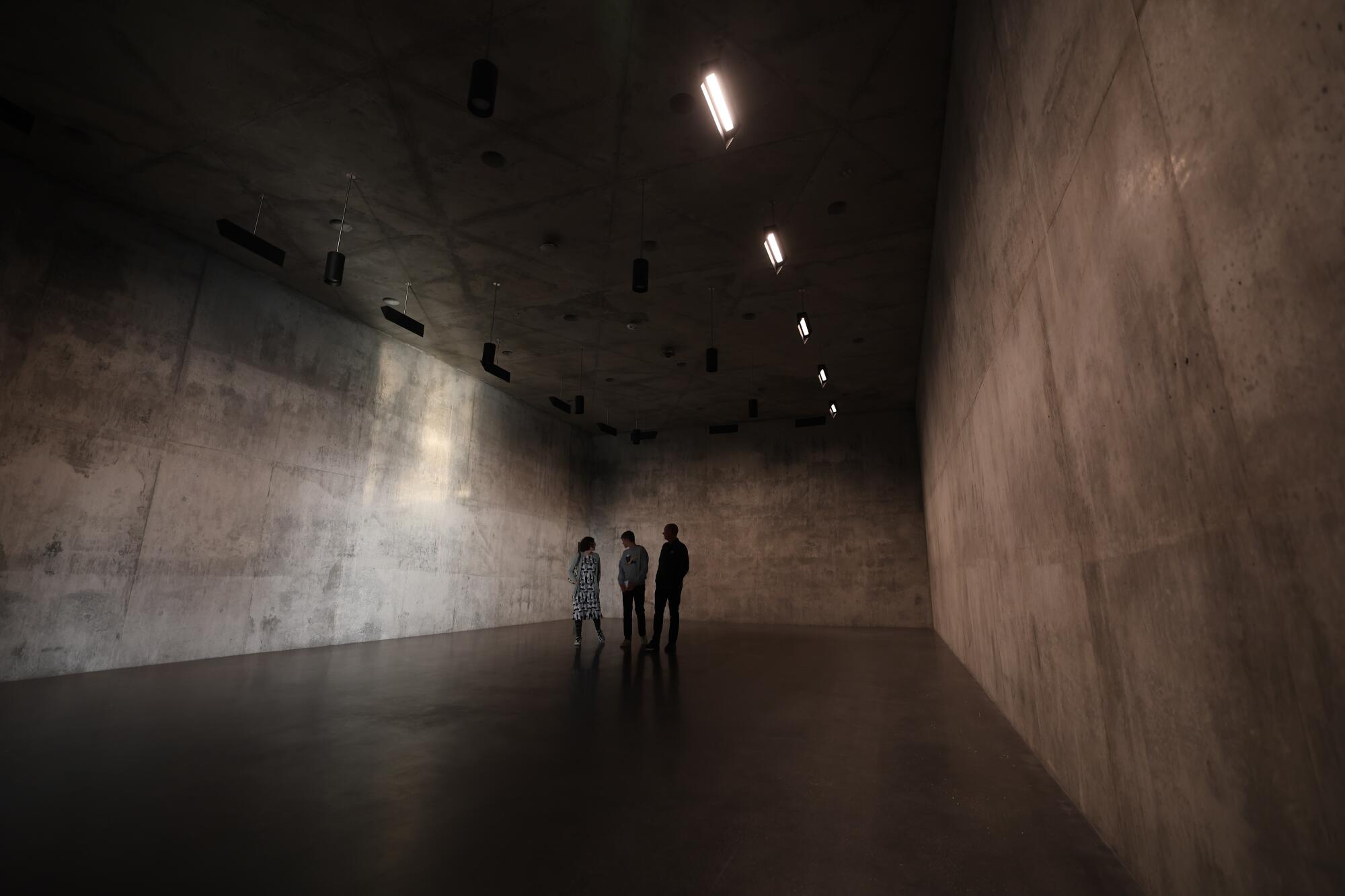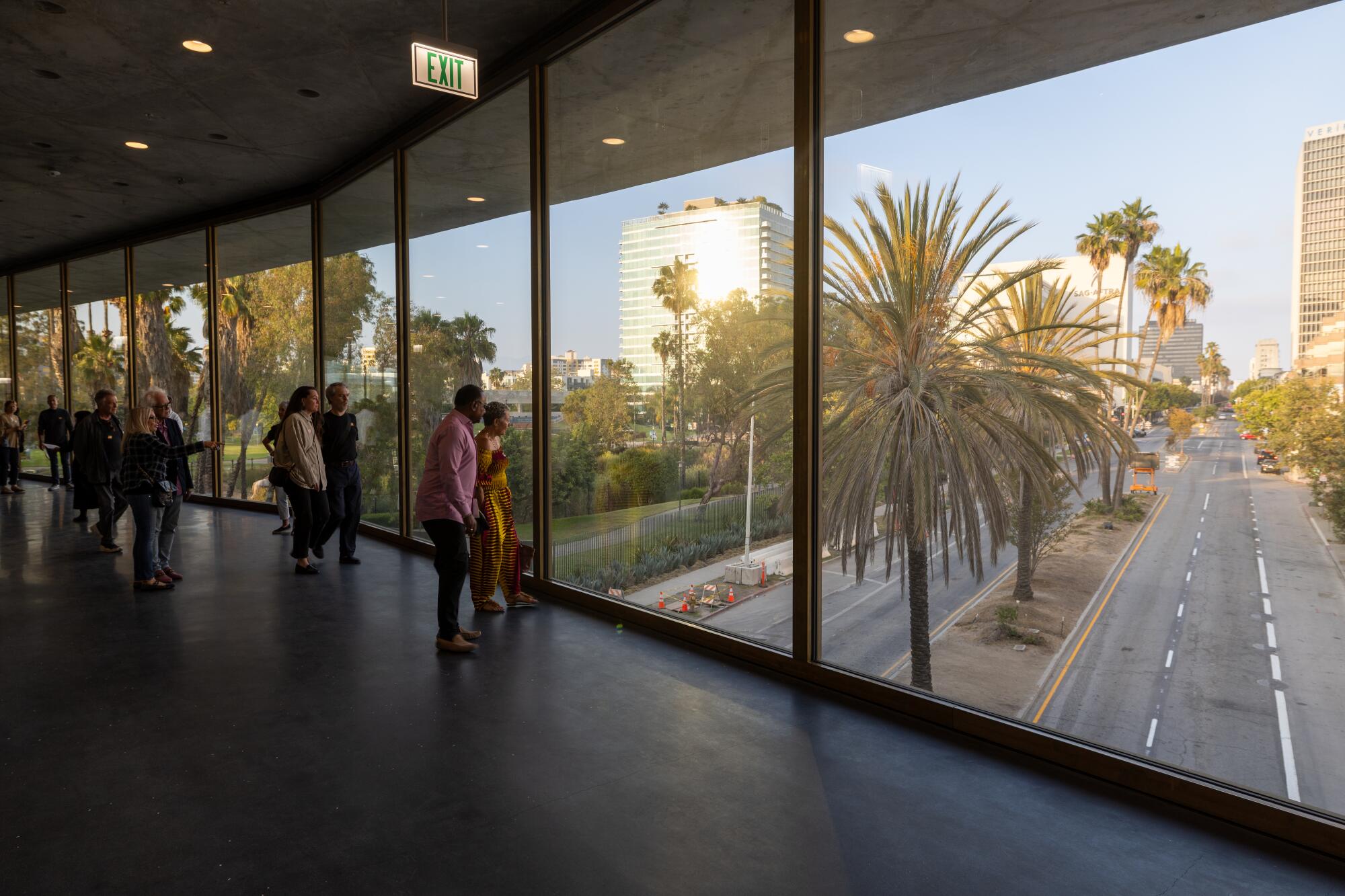LACMA begins drilling concrete walls to install art in new building
Los Angeles County Museum of Art’s new Peter Zumthor-designed David Geffen Galleries are alive with sound and activity. Voices echo through the vast, concrete space and a cacophony of drills and electric lifts beep, buzz and blare. A unique colored glaze is being applied to gallery walls, and paintings and photos are being installed throughout.
That gritty whir? It’s the Hilti TE 4-22 cordless rotary hammer drill. “A very fine product,” says senior art preparator Michael Price with a sly smile. He’s been drilling holes in the concrete walls with the large red contraption, which comes with a small attached vacuum that sucks up concrete dust as it penetrates the wall. The work is simple and done in a matter of seconds.

Senior art preparator Michael Price drills into concrete walls to hang art in LACMA’s new David Geffen Galleries. He jokingly calls the Hilti TE 4-22 cordless rotary hammer drill “a very fine product.”
(Jason Armond / Los Angeles Times)
Some of the first holes were drilled a little more than a week ago for the installation of a photo sculpture LACMA commissioned for its entrance by Los Angeles-born artist Todd Gray, titled “Octavia Butler’s Gaze.” Last Wednesday, Gray, along with LACMA director and Chief Executive Michael Govan and curator Britt Salvesen, watched the final panel of the 27-foot-long assemblage being hoisted onto the wall and put in place using wooden cleats that fit together much like a jigsaw puzzle.
“This is another thing that concrete makes possible,” says Salvesen, the head of the photography, and prints and drawings, departments, noting with satisfaction how flush the photographs sit against the wall. “The traditional sheetrock drywall used in many museums have been painted and repainted so many times, they’re not exactly pristine when it comes to leveling.”
Gray steps back and looks at the finished product, nodding with quiet pride. The L.A. native attended Hamilton High School and CalArts and felt deeply honored to have been tapped for a permanent commission. He was therefore among the first people to take a hard-hat tour of the building when it was under construction so he could familiarize himself with the space. The new building opens in April 2026.
“I was kind of overwhelmed,” Gray says. “I had never been in an architectural space like this so I was just really curious. But I must admit, I was much more concerned about this wall.”
The wall is big — a blank, concrete slate — and Gray’s piece will be the first work of art guests see when they walk up the broad staircase leading to the new galleries. In Butler’s portrait, which Gray took in the 1990s, the influential writer looks contemplatively off into the distance — whether near or far, one can’t be sure. Her expression is unreadable, at once thoughtful, curious, interested and detached.

A portrait of Octavia Butler, taken by Todd Gray in the 1990s, anchors the 27-foot-long photo sculpture commissioned by LACMA for the entrance of its new David Geffen Galleries.
(Jason Armond / Los Angeles Times)
Her face is in a gold, oval frame and the viewer’s eyes follow hers to other aspects of the piece — an assemblage of large and small photos taken by Gray in places around the world, including Versailles, Norway and Ghana. It includes an image of an idyllic-looking path through bright green foliage that leads to a slave castle in Cape Coast, Ghana. There is also a striking image of stars in the cosmos, a lovely fresco from a church in Rome, a picture of traditional sculpture housed at the AfricaMuseum in Belgium and a series of stoic Greek columns.
“A lot of my work is contesting art history, or talking about art history, or photography’s place in history, my history, various histories culturally,” said Gray, explaining why he likes that LACMA’s collection will not be exhibited chronologically, or by medium or region, but rather in a series of interwoven exhibits that connect vastly different art in dialogue. “So it was really a commission made in heaven.”
The new galleries, explained Govan, will focus on “migration and intersection, rather than American art over on one side of the museum and European art in a different wing.”
Gray’s photo sculpture, for example, will be adjacent to a gallery featuring African art and near another with Latin American art.
It will also be directly across from a floor-to-ceiling window. These giant windows are a key part of Zumthor’s design — and a flash point for controversy, with critics arguing that too much sunlight could harm fragile art.
Translucent curtains are being designed for some of the windows, but won’t be used throughout, and not in the entrance across from “Octavia’s Gaze.” For that reason, Gray said he employed a relatively new technique called UV direct printing that was developed for outdoor signage. The process involves intense ultraviolet lights that cure and harden the ink, ultimately searing it into the printing material. These prints won’t fade, Gray said.
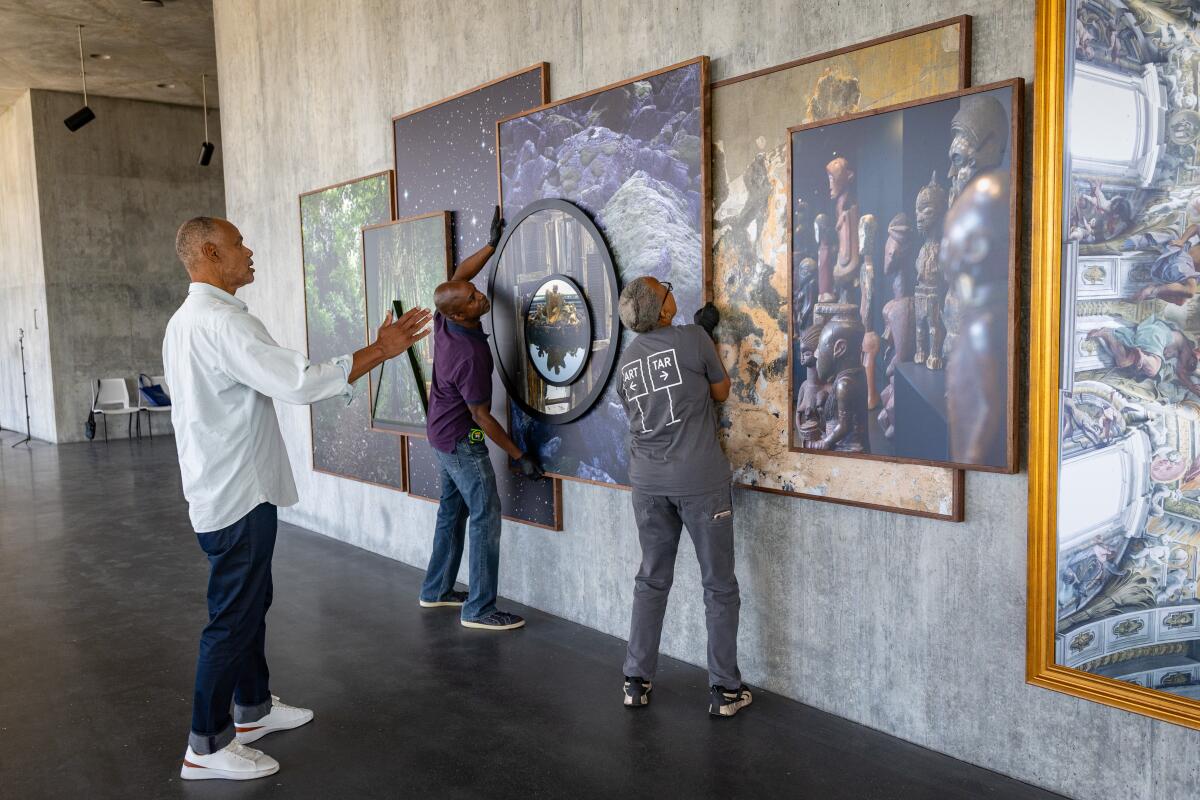
Todd Gray, left, oversees the installation of his photo sculpture “Octavia Butler’s Gaze.” The piece used a new UV printing technology to ensure it won’t fade in the sunlight coming in through the floor-to-ceiling windows across from it.
(Jason Armond / Los Angeles Times)
Delicate and old art will not be put at risk by light, Govan said. The interior of Zumthor’s building is dotted with boxy, windowless galleries that Govan and Zumthor call “houses.” And like houses, the interior of galleries are being treated to color — not in the form of paint, however.
Zumthor conceived of three colors that he wanted used in the galleries, explained Diana Magaloni, senior deputy director for conservation, curatorial and exhibitions, who has been mixing the glazes and working with a team of four trained artists to apply them. The colors are a reddish black, a Renaissance ultramarine blue and a blackish burgundy that Zumthor hoped would conjure a cave-like dimness. Overall, Magaloni said, Zumthor wanted the color to look as if it were emerging from darkness.
There are 27 galleries and the colors will be divided by section: Nine on the south side are red, nine on the north side are black and the nine in the middle are blue.
The glazing technique was conceived by a friend of Zumthor’s who lives in Switzerland, and LACMA is currently the only organization to employ it, Magaloni said.
Pigments made of minerals including hematite and rocks like lapis lazuli are ground into nanoparticles and suspended in silica, resembling “melted glass,” as Magaloni describes. The glaze is then applied to the walls, a process that must be done at once in order to prevent any impression of brushstrokes, and also because the glaze hardens quickly. Once it’s dry, the team applies a second coat of glaze pigment infused with black carbon nanoparticles. The effect is dark and mottled — it looks as if the concrete has swallowed the color.
“The concrete has all this life in and of itself,” said Magaloni. “You can walk through the building and you can see that those surfaces are not really homogeneous. The material expresses itself with no artifice, and we wanted to preserve that.”
Painting the concrete would erase that life, she added.
A gallery blushing in a deep wine color, with the theme of “Leisure and Labor in the American Metropolis,” is almost ready. Work by George Bellows, James Van Der Zee, Mary Cassatt and Robert Henri adorn the walls, and there is a table ready to receive a Tiffany lamp. Govan points out that such paintings would not have been originally displayed on white walls but rather on walls of richly colored fabric.
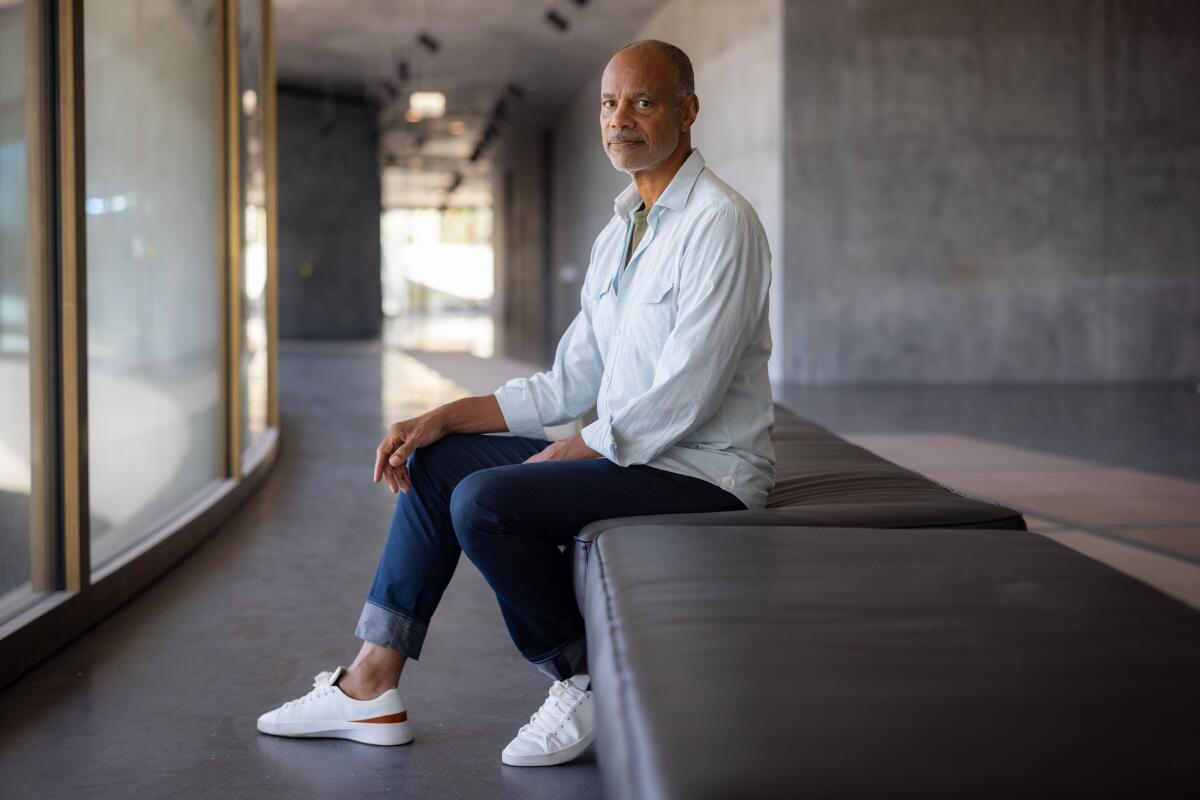
“She’s asking you something,” Todd Gray said of his portrait of Octavia Butler.
(Jason Armond / Los Angeles Times)
Gray’s piece will also be in dialogue with this room, calling to it from another time and place — asking viewers to turn their gaze to history, slavery, transcendence, salvation, power and so much more.
At this moment in time, when arts institutions are grappling with the implications of the Trump administration’s claim that the Smithsonian Institution presents “divisive, race-centered ideology” and vow to monitor what other museums around the country are putting on display, Gray’s piece feels like a small bit of resistance.
“She’s asking you something,” Gray says of Butler.
The answer is yours to declare.
